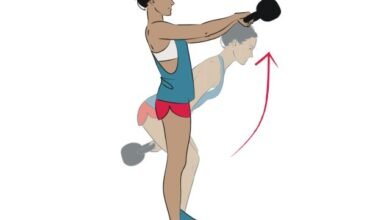How Often to Work Out for Weight Loss at Every Fitness Level

So, you’ve decided it’s time to shed some pounds and get into shape. But how often should you work out for weight loss? Many beginners and advanced fitness enthusiasts alike ponder this question. Striking the perfect balance between frequency, intensity, and rest is key to achieving sustainable weight loss. While there isn’t a one-size-fits-all answer, understanding how often you should work out can significantly impact your fitness journey.
Working out too little might leave you wondering why those extra pounds aren’t budging, while overdoing it can lead to burnout or injury. The sweet spot lies somewhere in between, tailored to your fitness level and goals. Remember, these are just guidelines. Feel free to adjust them to your needs and listen to your body.
Ahead, we’ll dive into the role frequency plays, the types of workouts that can help you achieve your weight-loss goals, and how to create a workout plan that’s both effective and sustainable, no matter where you are on your fitness journey!
Here’s how workout frequency plays a role in weight loss.

The key to losing weight is creating a calorie deficit, which means burning more calories than you consume. Regular exercise is a crucial part of this equation, but it’s equally important to maintain a healthy diet. The frequency of your workouts should match your fitness level and goals, but the combination of exercise and diet will lead to sustainable weight loss.
For beginners:
When you’re just starting out, it’s crucial to ease into a routine that your body can handle. Jumping into an intense workout schedule can lead to injury and burnout, derailing your progress before you even get started.
Working out three to four times a week is ideal for beginners. This frequency allows for adequate recovery time, which is essential for muscle repair and overall progress. Start with 30-minute sessions and gradually increase the duration and intensity as your fitness improves.
Incorporating a mix of cardio and strength training will help you build a solid foundation while burning calories and increasing your metabolism. Cardio exercises, such as brisk walking, jogging, or cycling, help burn calories, while strength training builds muscle, which can increase your resting metabolic rate.
For intermediate level:
If you’ve been working out consistently for a few months, your body is likely accustomed to regular physical activity. At this stage, increasing your workout frequency to four to five times a week can help break through any plateaus and continue to promote weight loss.
It’s important to vary your workouts to keep your body challenged and to prevent boredom. Adding more complex movements and increasing the intensity can also be beneficial. But remember, rest days are just as important as workout days. Listen to your body and include rest days to avoid overtraining and ensure proper recovery.
For advanced gymgoers:
Working out five to six times a week can be effective for those with a solid fitness foundation and looking to fine-tune their physique. Advanced athletes have the conditioning to handle more frequent and intense workouts, but balancing high-intensity sessions with recovery is crucial. (Remember, even advanced athletes need rest days to allow their bodies to recover and avoid injuries!)
Incorporating different training modalities, such as high-intensity interval training (HIIT), endurance training, and strength training, can keep your workouts fresh and productive.
These are the best types of weight-loss workouts and how often to do them:

1. Cardio
Cardio workouts are essential for burning calories and improving cardiovascular health. They range from steady-state exercises like jogging or cycling to high-intensity interval training (HIIT).
Aim to include cardio sessions three to four times a week for weight loss. Beginners can start with 20 to 30 minutes of steady-state cardio, while intermediates and advanced individuals can incorporate 30 to 45 minutes of steady-state or 20 to 30 minutes of HIIT.
2. Strength Training
Strength training builds muscle, which helps increase your metabolism and burn more calories at rest.
Aim to strength train at least two to three times a week for weight loss. Beginners can start with full-body workouts, while intermediates and advanced individuals can split their routines into upper and lower-body days or focus on specific muscle groups.
3. HIIT (High-Intensity Interval Training)
HIIT involves short bursts of intense exercise followed by rest or low-intensity exercise. This type of workout is highly effective for burning calories and can be done in a shorter amount of time.
Include HIIT sessions one to two times a week. Beginners can start with 10 to 15-minute sessions, while advanced gymgoers can push for 20 to 30 minutes.
4. Mobility and Recovery Workouts
Remember to include mobility and recovery workouts in your routine. Yoga, Pilates, dynamic mobility, and stretching can improve flexibility and mobility, reduce the risk of injury, and promote relaxation and recovery.
Aim to incorporate these workouts one to two times a week, regardless of your fitness level.





